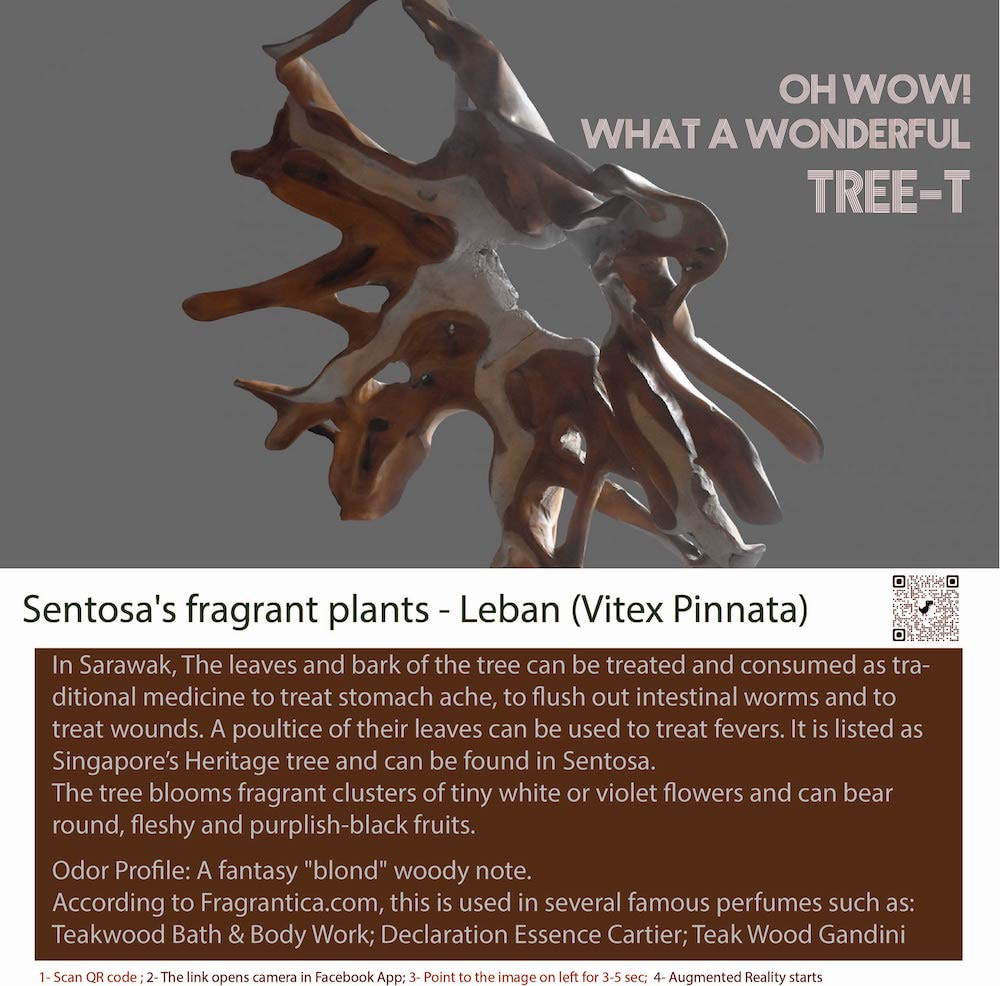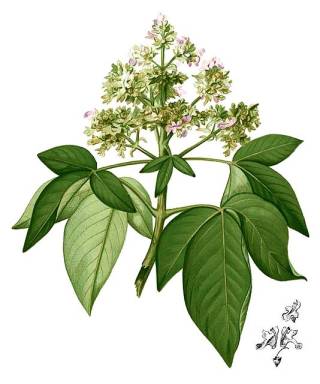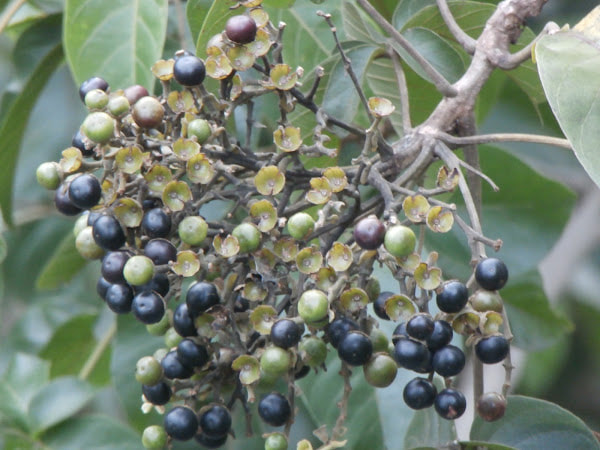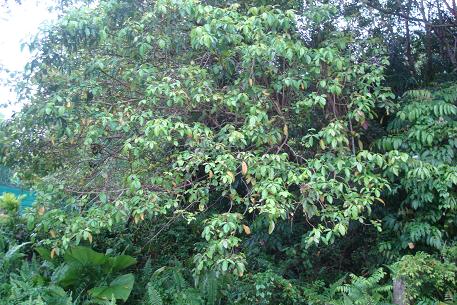Crafting Cultural Connections: The Artistry Behind Our Woody Perfume
Labdanum: A Fragrant Resin of History and Myth
In the world of perfumery and fragrances, few substances carry the ancient allure and captivating aroma of Labdanum. Derived from the resin of the Cistus ladanifer shrub, Labdanum has been cherished for centuries for its rich, woody, and balsamic scent. Beyond its aromatic uses in perfumes, Labdanum has found a place in therapeutic oils, traditional medicine, and even culinary delights. Join us on a journey to explore the fascinating world of Labdanum, delving into its fragrant secrets, therapeutic properties, historical significance, and fun crazy facts.
1. Introduction to Labdanum: Labdanum, also known as "lăbdănum," is a sticky resin that exudes from the leaves and stems of the Cistus ladanifer shrub, native to the Mediterranean region and North Africa. It has a long history of use, dating back to ancient civilizations like the Egyptians and Greeks, who valued it for its fragrant properties and believed it to possess mystical qualities.
2. Perfumes and Fragrance: Labdanum's intoxicating aroma has made it a prized ingredient in perfumery. Its warm, resinous scent adds depth and complexity to fragrances, creating a sense of mystery and allure. Perfumers often use Labdanum as a base note to anchor their creations, combining it with other natural essences to craft unique and captivating scents.
3. Therapeutic Oils and Aromatherapy: In aromatherapy, Labdanum essential oil is cherished for its grounding and centering properties. The oil is believed to promote relaxation, reduce stress, and uplift the spirit. Aromatherapists often use Labdanum oil in diffusers, massage blends, and meditation practices to create a harmonious and calming environment.
4. Medicinal Uses: In traditional medicine, Labdanum has been used for various purposes, including as a remedy for wounds, respiratory issues, and skin conditions. It was also used in incense for spiritual rituals and as a fumigant to purify the air. However, it is essential to exercise caution and consult with a qualified practitioner before using Labdanum for medicinal purposes.
5. Culinary Delights: While Labdanum is not commonly used in modern cuisine, it has historical significance in ancient cultures. In some regions, Labdanum resin was mixed with honey or other sweet substances to create edible treats with a distinct aromatic touch.
6. History and Mythology: Labdanum's history is steeped in mythology and legends. In ancient Egypt, it was associated with the sun god Ra and believed to possess sacred qualities. In Greek mythology, the shrub Cistus ladanifer was linked to the love story of Cistus and the beautiful nymph Labdanum. The resin's use in sacred rituals and religious ceremonies dates back to antiquity.
7. Harvesting and Extraction: Obtaining Labdanum resin is a delicate and time-consuming process. It is primarily collected by gently combing the resin from the shrub's leaves and branches. The collected resin is then processed to extract Labdanum essential oil, a labor-intensive yet rewarding endeavor.
8. Labdanum in Modern Perfumery: Despite advances in synthetic fragrance compounds, Labdanum remains highly valued in modern perfumery. Its natural and complex scent cannot be replicated, making it a sought-after ingredient for niche and artisanal perfumes.
9. Sustainability and Conservation: As demand for Labdanum increases, sustainable harvesting and conservation efforts become crucial to protect the Cistus ladanifer shrub's natural habitat. Ethical practices are essential to ensure the future availability of this precious aromatic resin.
10. Fun and Crazy Facts: Labdanum has had a colorful journey through history. It was once a valuable trade commodity, sought after by ancient civilizations and used in sacred ceremonies and rituals. Its mystical allure continues to captivate perfumers, aromatherapists, and scent enthusiasts today.
Labdanum, the fragrant resin of history and myth, holds an enduring place in the world of perfumery, aromatherapy, and traditional medicine. Its rich, balsamic scent and intriguing history connect us to ancient civilizations and their reverence for nature's aromatic treasures. As we cherish the captivating essence of Labdanum, let us also embrace the importance of sustainable practices to preserve this fragrant gift for generations to come.
In the world of perfumery and fragrances, few substances carry the ancient allure and captivating aroma of Labdanum. Derived from the resin of the Cistus ladanifer shrub, Labdanum has been cherished for centuries for its rich, woody, and balsamic scent. Beyond its aromatic uses in perfumes, Labdanum has found a place in therapeutic oils, traditional medicine, and even culinary delights. Join us on a journey to explore the fascinating world of Labdanum, delving into its fragrant secrets, therapeutic properties, historical significance, and fun crazy facts.
1. Introduction to Labdanum: Labdanum, also known as "lăbdănum," is a sticky resin that exudes from the leaves and stems of the Cistus ladanifer shrub, native to the Mediterranean region and North Africa. It has a long history of use, dating back to ancient civilizations like the Egyptians and Greeks, who valued it for its fragrant properties and believed it to possess mystical qualities.
2. Perfumes and Fragrance: Labdanum's intoxicating aroma has made it a prized ingredient in perfumery. Its warm, resinous scent adds depth and complexity to fragrances, creating a sense of mystery and allure. Perfumers often use Labdanum as a base note to anchor their creations, combining it with other natural essences to craft unique and captivating scents.
3. Therapeutic Oils and Aromatherapy: In aromatherapy, Labdanum essential oil is cherished for its grounding and centering properties. The oil is believed to promote relaxation, reduce stress, and uplift the spirit. Aromatherapists often use Labdanum oil in diffusers, massage blends, and meditation practices to create a harmonious and calming environment.
4. Medicinal Uses: In traditional medicine, Labdanum has been used for various purposes, including as a remedy for wounds, respiratory issues, and skin conditions. It was also used in incense for spiritual rituals and as a fumigant to purify the air. However, it is essential to exercise caution and consult with a qualified practitioner before using Labdanum for medicinal purposes.
5. Culinary Delights: While Labdanum is not commonly used in modern cuisine, it has historical significance in ancient cultures. In some regions, Labdanum resin was mixed with honey or other sweet substances to create edible treats with a distinct aromatic touch.
6. History and Mythology: Labdanum's history is steeped in mythology and legends. In ancient Egypt, it was associated with the sun god Ra and believed to possess sacred qualities. In Greek mythology, the shrub Cistus ladanifer was linked to the love story of Cistus and the beautiful nymph Labdanum. The resin's use in sacred rituals and religious ceremonies dates back to antiquity.
7. Harvesting and Extraction: Obtaining Labdanum resin is a delicate and time-consuming process. It is primarily collected by gently combing the resin from the shrub's leaves and branches. The collected resin is then processed to extract Labdanum essential oil, a labor-intensive yet rewarding endeavor.
8. Labdanum in Modern Perfumery: Despite advances in synthetic fragrance compounds, Labdanum remains highly valued in modern perfumery. Its natural and complex scent cannot be replicated, making it a sought-after ingredient for niche and artisanal perfumes.
9. Sustainability and Conservation: As demand for Labdanum increases, sustainable harvesting and conservation efforts become crucial to protect the Cistus ladanifer shrub's natural habitat. Ethical practices are essential to ensure the future availability of this precious aromatic resin.
10. Fun and Crazy Facts: Labdanum has had a colorful journey through history. It was once a valuable trade commodity, sought after by ancient civilizations and used in sacred ceremonies and rituals. Its mystical allure continues to captivate perfumers, aromatherapists, and scent enthusiasts today.
Labdanum, the fragrant resin of history and myth, holds an enduring place in the world of perfumery, aromatherapy, and traditional medicine. Its rich, balsamic scent and intriguing history connect us to ancient civilizations and their reverence for nature's aromatic treasures. As we cherish the captivating essence of Labdanum, let us also embrace the importance of sustainable practices to preserve this fragrant gift for generations to come.
To experience augmented reality, please open the Facebook-app using QR code and point to the image below
Captivating Aromas: The Essence of Sentosa's Lebanese-Inspired Fragrance
Leban is an evergreen tree up to 30m in height. The leaves are very distinctive, being palmately compound with sessile leaflets. The leaflets normally comes in 5 with 2 smaller leaflets at the back. The bark is fissured. The berries of the Malayan Teak is attractive to birds.
These hardy pines with refreshingly bright green leaves are still found on the natural cliffs of Sentosa. But as suitable habitats are becoming increasingly rare, so too are the trees. It is believed that there are less than 50 wild specimens of these trees in Singapore.
These hardy pines with refreshingly bright green leaves are still found on the natural cliffs of Sentosa. But as suitable habitats are becoming increasingly rare, so too are the trees. It is believed that there are less than 50 wild specimens of these trees in Singapore.
The Leban tree, scientifically known as Vatica pauciflora, is a remarkable evergreen species that can reach towering heights of up to 30 meters. Originating from Southeast Asia, including regions like Malaysia and Singapore, this tree possesses distinctive features that make it stand out in its natural habitat.
One of the most striking features of the Leban tree is its leaves. These leaves are palmately compound, meaning that they consist of multiple leaflets attached to a single point at the end of the leaf stalk. The arrangement of the leaflets is quite unique, typically comprising five main leaflets, with an interesting twist – two smaller leaflets positioned at the back of the larger ones. This characteristic arrangement gives the tree's foliage a distinct appearance, catching the eye of anyone who encounters it.
The bark of the Leban tree is another notable aspect. The bark's surface is fissured, meaning it forms deep cracks and furrows as the tree matures. This textural quality of the bark not only adds to the tree's aesthetic allure but also plays a role in protecting the inner layers of the tree and regulating its interactions with the external environment.
One of the most striking features of the Leban tree is its leaves. These leaves are palmately compound, meaning that they consist of multiple leaflets attached to a single point at the end of the leaf stalk. The arrangement of the leaflets is quite unique, typically comprising five main leaflets, with an interesting twist – two smaller leaflets positioned at the back of the larger ones. This characteristic arrangement gives the tree's foliage a distinct appearance, catching the eye of anyone who encounters it.
The bark of the Leban tree is another notable aspect. The bark's surface is fissured, meaning it forms deep cracks and furrows as the tree matures. This textural quality of the bark not only adds to the tree's aesthetic allure but also plays a role in protecting the inner layers of the tree and regulating its interactions with the external environment.
One of the fascinating ecological interactions involving the Leban tree revolves around its berries. The berries of the Malayan Teak, as the Leban tree is sometimes referred to, hold a certain allure for birds. The vibrant colors, textures, and possibly the nutritional content of the berries make them attractive to various bird species. This relationship showcases the tree's role in providing sustenance and habitat for local avian populations, contributing to the overall biodiversity of the ecosystem.
Despite its robust characteristics and captivating attributes, the Leban tree faces challenges in its natural environment. These trees, known for their hardiness and their refreshingly bright green leaves, were once a common sight on the natural cliffs of Sentosa, an island resort in Singapore. However, the expansion of human activities and urbanization have led to the degradation and loss of suitable habitats for these trees. As a result, the populations of Leban trees have significantly declined over the years.
Despite its robust characteristics and captivating attributes, the Leban tree faces challenges in its natural environment. These trees, known for their hardiness and their refreshingly bright green leaves, were once a common sight on the natural cliffs of Sentosa, an island resort in Singapore. However, the expansion of human activities and urbanization have led to the degradation and loss of suitable habitats for these trees. As a result, the populations of Leban trees have significantly declined over the years.
The Fusion of Aromas: Exploring the Lebanese-Sentosa Scent Harmony
In Singapore, specifically, it is a matter of concern that the number of wild Leban tree specimens has dwindled drastically. Current estimates suggest that there are fewer than 50 wild individuals of this species remaining in the country. This decline is emblematic of the broader challenges faced by many native plant species in the face of urban development and habitat fragmentation.
Conservation efforts are crucial to safeguarding the future of the Leban tree and other indigenous species facing similar threats. These efforts may include habitat restoration projects, the establishment of protected areas, and raising awareness about the ecological importance of these trees. Preserving the biodiversity of the region, including iconic species like the Leban tree, is vital for maintaining healthy ecosystems and ensuring a sustainable natural heritage for future generations.
In conclusion, the Leban tree, scientifically known as Vatica pauciflora, is an evergreen marvel with striking features. From its palmately compound leaves with a unique arrangement of leaflets to its fissured bark and bird-attracting berries, this tree commands attention. However, the dwindling populations of wild specimens in Singapore underscore the challenges posed by urbanization and habitat loss. To secure the future of the Leban tree and other native species, conservation efforts are imperative, reminding us of the importance of preserving the natural heritage that these trees represent.
Conservation efforts are crucial to safeguarding the future of the Leban tree and other indigenous species facing similar threats. These efforts may include habitat restoration projects, the establishment of protected areas, and raising awareness about the ecological importance of these trees. Preserving the biodiversity of the region, including iconic species like the Leban tree, is vital for maintaining healthy ecosystems and ensuring a sustainable natural heritage for future generations.
In conclusion, the Leban tree, scientifically known as Vatica pauciflora, is an evergreen marvel with striking features. From its palmately compound leaves with a unique arrangement of leaflets to its fissured bark and bird-attracting berries, this tree commands attention. However, the dwindling populations of wild specimens in Singapore underscore the challenges posed by urbanization and habitat loss. To secure the future of the Leban tree and other native species, conservation efforts are imperative, reminding us of the importance of preserving the natural heritage that these trees represent.
Crafting Scents with Passion: The Story Behind Scentopia Singapore
In traditional medicine, the healing properties of teak extend beyond its durable timber. The bark of the teak tree holds significance as a remedy for stomachaches. Through a process of decoction, where the bark is boiled to extract its beneficial compounds, a potent solution is created that is believed to alleviate stomach discomfort.
Furthermore, the leaves of the teak tree possess medicinal potential as well. By crafting a poultice from the leaves, they can be applied externally to the body. This application serves as a traditional method for treating fevers and addressing various types of wounds. The leaves are often used for their perceived therapeutic qualities, which are thought to aid in reducing fever symptoms and promoting wound healing.
These traditional medicinal uses of teak underscore its cultural and historical importance in regions where the tree is native. While these practices have been passed down through generations, it's important to note that modern medical advancements have provided alternative methods for treating stomachaches, fevers, and wounds. Still, the historical use of teak's bark and leaves in traditional medicine highlights the diverse applications of this remarkable tree beyond its well-known timber qualities.
As with any traditional remedies, it's recommended to approach them with caution and consult with medical professionals for appropriate guidance, especially when more established medical treatments are available.
Furthermore, the leaves of the teak tree possess medicinal potential as well. By crafting a poultice from the leaves, they can be applied externally to the body. This application serves as a traditional method for treating fevers and addressing various types of wounds. The leaves are often used for their perceived therapeutic qualities, which are thought to aid in reducing fever symptoms and promoting wound healing.
These traditional medicinal uses of teak underscore its cultural and historical importance in regions where the tree is native. While these practices have been passed down through generations, it's important to note that modern medical advancements have provided alternative methods for treating stomachaches, fevers, and wounds. Still, the historical use of teak's bark and leaves in traditional medicine highlights the diverse applications of this remarkable tree beyond its well-known timber qualities.
As with any traditional remedies, it's recommended to approach them with caution and consult with medical professionals for appropriate guidance, especially when more established medical treatments are available.
Aromatic Palette: The Array of Woody Notes in Our Sentosa Perfume
Teak timber, renowned for its exceptional durability, holds immense value in regions with warm climates. Notably, in countries like India and Myanmar, teak wood beams that exhibit robust preservation can frequently be discovered within structures that have stood for several centuries. A testament to its remarkable longevity, teak beams have endured for over a millennium in palaces and temples, attesting to their enduring strength and resilience.
One of the most remarkable attributes of teak wood is its near-immunity to decay when sheltered from the elements. The timber's natural oils and resins contribute to its imperishable nature, rendering it highly resistant to fungal growth, insect infestations, and other forms of deterioration. These intrinsic qualities make teak a preferred choice for construction, particularly in environments prone to high humidity and temperature fluctuations.
In historical contexts, the longevity of teak timber has contributed to its popularity in the creation of grand architectural marvels. The wood's presence in ancient buildings not only reflects its inherent sturdiness but also showcases the craftsmanship of the past. The ability of teak to maintain its structural integrity over extended periods underscores its value as a construction material, especially for designs that require enduring strength and stability.
In essence, teak timber's durability and longevity make it a prized resource in regions where warmth and humidity are prominent climatic features. Its ability to withstand the test of time, evident in the well-preserved beams within historic structures, highlights its status as a premier choice for enduring construction. Furthermore, its resistance to decay when sheltered makes it an invaluable asset in the realm of building materials, contributing to the legacy of architectural heritage across generations.
One of the most remarkable attributes of teak wood is its near-immunity to decay when sheltered from the elements. The timber's natural oils and resins contribute to its imperishable nature, rendering it highly resistant to fungal growth, insect infestations, and other forms of deterioration. These intrinsic qualities make teak a preferred choice for construction, particularly in environments prone to high humidity and temperature fluctuations.
In historical contexts, the longevity of teak timber has contributed to its popularity in the creation of grand architectural marvels. The wood's presence in ancient buildings not only reflects its inherent sturdiness but also showcases the craftsmanship of the past. The ability of teak to maintain its structural integrity over extended periods underscores its value as a construction material, especially for designs that require enduring strength and stability.
In essence, teak timber's durability and longevity make it a prized resource in regions where warmth and humidity are prominent climatic features. Its ability to withstand the test of time, evident in the well-preserved beams within historic structures, highlights its status as a premier choice for enduring construction. Furthermore, its resistance to decay when sheltered makes it an invaluable asset in the realm of building materials, contributing to the legacy of architectural heritage across generations.
Join Scentopia, Sentosa's latest tourist attraction wonderful orchid scent crafting, fragrance tour, bridal shower or corporate team building which includes perfume making onsite and offsite, beach activities and more. We also serve primary school learning journey, secondary students and pupil on industrial excursions. Know more about our orchids perfume bar or therapeutic orchid scents and other wellness aromas. Conatct Perfume workshop or book a scent crafting session here.




